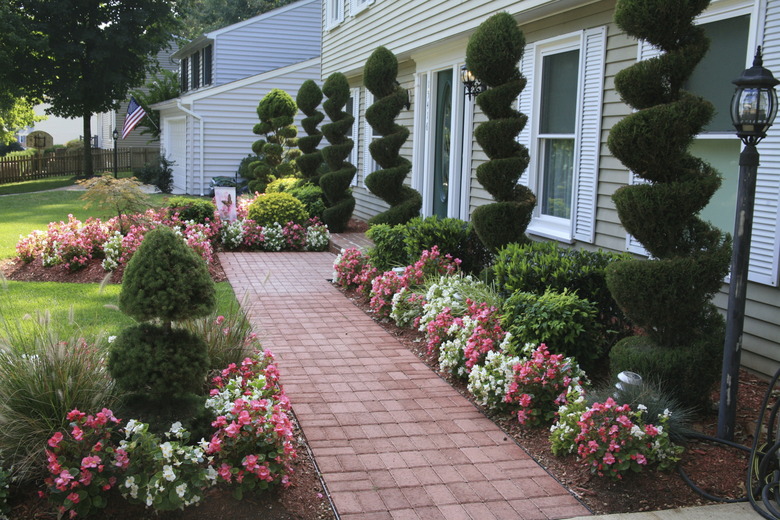How To Treat Powdery Mildew On Begonias
Whether a garden is drenched in sun or deep in shade, at least one of the more than 1,000 begonia species (Begonia spp.) and thousands of begonia cultivars can lift it from mundane to magical. As subtropical and tropical plants, most begonias survive winters outdoors in U.S. Department of Agriculture plant hardiness zones 10 through 11. Elsewhere, they can be lifted before the first frost and stored indoors for the winter. Frost isn't their only enemy; the humidity begonias love exposes them to powdery mildew. Treat an infection culturally or organically before resorting to chemical fungicide.
The Fungi
Two powdery mildew fungi (Erysiphe cichoracearum and Oidium begoniae) infect begonias. Wind or water carry their spores to begonia leaves, but they need the right conditions to germinate.
The chances of infection increase when water vapor — or humidity — in the air condenses as temperatures drop and dampens the begonias' leaves. Without any moisture, spores landing on the leaves don't germinate. On slightly damp leaves, they germinate in only one hour. Standing water on the leaves drown the spores. The threat of infection is highest on begonias growing in shade at temperatures fluctuating between 60 and 80 degrees Fahrenheit.
Cultural Treatments
Water begonias in midmorning by sprinkling them from above. Sprinkling removes spores already on the leaves, and drowns the ones landing before the leaves dry. To lower the humidity around potted begonias, space their pots at least 1 foot apart for good air circulation. Prune mildewed leaves at the first sign of infection and dispose of them in sealed plastic bags. Remove them with clean, sharp stem cutters rinsed in rubbing alcohol between cuts and after use.
The Milk-and-Water Treatment
A solution of 1 part skim or raw milk to 9 parts water sprayed on infested plants reduces powdery mildew symptoms up to 90 percent, reports the National Gardening Association. The catch is that the milk-and-water solution won't work on shade-garden begonias. It needs sunlight to trigger its mildew-killing properties, according to researcher Peter Crisp of Australia's Adelaide University. Spray begonias in sun until the solution coats all their surfaces. Repeat weekly until mildew-favoring conditions subside.
Neem Oil Treatment
Correctly treating begonias with organic, ready-to-use neem oil spray controls powdery mildew without hurting honeybees or other beneficial insects.
Time the treatment for the the early morning or after dark, when bees aren't pollinating. In calm, dry weather with a temperature below 90 degrees Fahrenheit, water the plants well. Dress in protective clothing, including a long-sleeved shirt, long pants, waterproof gloves, a respiratory mask and safety goggles.
**Coat the begonias until they drip, being sure to hit the backs of the leaves.** Repeat weekly as long as you see symptoms, and then every other week as long as the weather stays dry and temperatures remain between 60 and 80 degrees F.
References
- University of Florida Mid-Florida Research and Education Center: Begonia Prooduction Guide
- UC Statewide IPM Online: Floriculture and Ornamental Nurseries — Begonia Disease Control Outlines
- UC Statewide IPM Online: Powdery Mildew on Ornamentals
- National Gardening Association: Got Mildew? Get Milk!
- Science News: A Dairy Solution to Mildew Woes
- University of California Statewide Integrated Pest Management Program: Pesticide Information — Active Ingredient, Neem Oil
